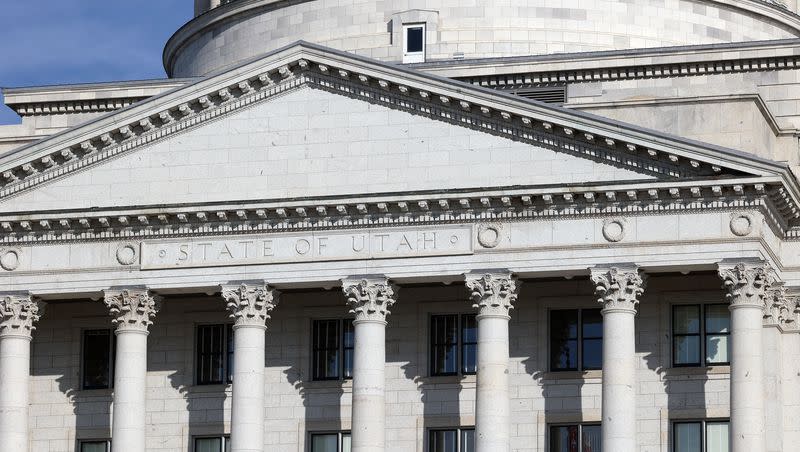Utah’s revenue growth is slowing. Here’s why lawmakers were advised to be cautious about the new budget

After state revenues fell nearly $50 million short of expectations last budget year, Utah lawmakers were warned Tuesday there may be more economic ups and downs ahead as they gear up for the 2024 Legislature that begins next month.
Already, the consensus revenue estimates agreed to by the Legislature and Utah Gov. Spencer Cox have dropped dramatically from just over a year ago, when there was more than $4 billion in new money anticipated.
For the budget year that begins July 1, 2024, the estimated revenue increase is nearly $638 million, split between $504.2 million in ongoing funds and almost $133.6 million in one-time monies.
But after adjustments made to the base budget by the Legislature’s Executive Appropriations Committee Tuesday, the amount available for new ongoing spending fell to just $7 million.
Those adjustments included setting aside $160 million for a yet-to-be determined tax cut, $100 million for approximately a 3% pay increase for public employees and $335 million for new infrastructure projects.
Related
Gov. Cox wants 35,000 starter homes built within the next 5 years. Here’s how he wants to do it
Gov. Spencer Cox introduces $186 million plan to combat homelessness
The state’s chief economist, Andrea Wilko, made it clear to the committee there’s no guarantee that all of the projected ongoing revenues, which largely come from income and sales tax collections, will materialize.
“Because of our uncertainty, and because we’re still a little bit worried about the volatility in the revenues, we think as much as $150 (million) of that could be high risk revenue. So in my usual voice of warning, please be cautious on how you spend it,” Wilko said.
The nearly $50 million deficit in the budget year that ended June 30, caused by income tax collections that were lower than expected, was covered by the state’s budget buffers, bolstered last year to more than $15 billion.
The economy is getting back to normal after big increases in sales tax collections during the COVID-19 pandemic fueled by $2.1 billion in federal funding and stimulus payments that led to more consumer spending, the state’s senior economist, Travis Eisenbacher, said.
“As the economy and behavior more generally has normalized and recovered from the pandemic ... we’re continuing to see that trend unwind,” he told the committee during a report on revenue volatility.
That, “along with more moderation in spending overall, leads us to expect a return to more typical, modest year-over-year growth in this piece of the (tax) base,” Eisenbacher said, noting past surges in housing prices and stocks helped push up income tax collections.
“Across all of the state’s major funding streams, we’ve seen levels of growth over the last three years well in excess of what would be considered normal as a result of many of these pandemic-era circumstances,” he said.
Such “extreme values tend to be just that and they don’t persist over time,” Eisenbacher advised, adding that while for the most part, Utah saw surpluses rather than deficits during the pandemic, “what goes up can come down.”
The governor’s proposed $29.5 billion budget, released Tuesday, would spend about $250 million of the state’s budget reserves, according to Sophia DiCaro, the executive director of the Governor’s Office of Planning and Budget.
The rest would be continue to be saved, DiCaro told reporters Monday, so “the state is still able to make debt payments and be in a healthy position to weather any kind of storm. That being said, we do feel like the economy is showing signs of strength.”
She said last budget year, there wasn’t “a lot of confidence” in the revenue estimates. “What we’re seeing now is more of a normalization to what things looked like prior to the pandemic.”
DiCaro acknowledged the messaging might seem “confusing” but said the state’s financial situation “is playing out the way we had estimated.”

